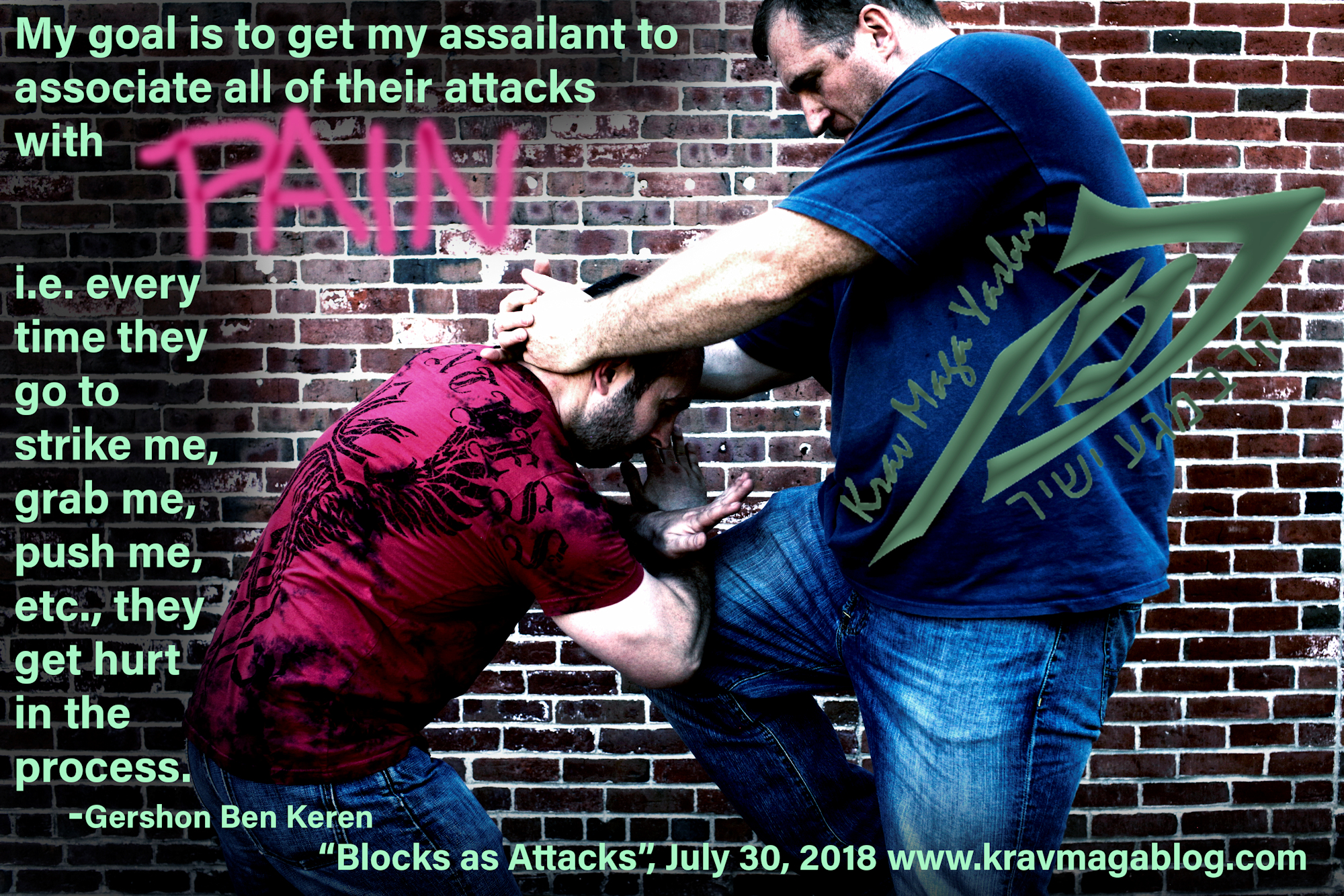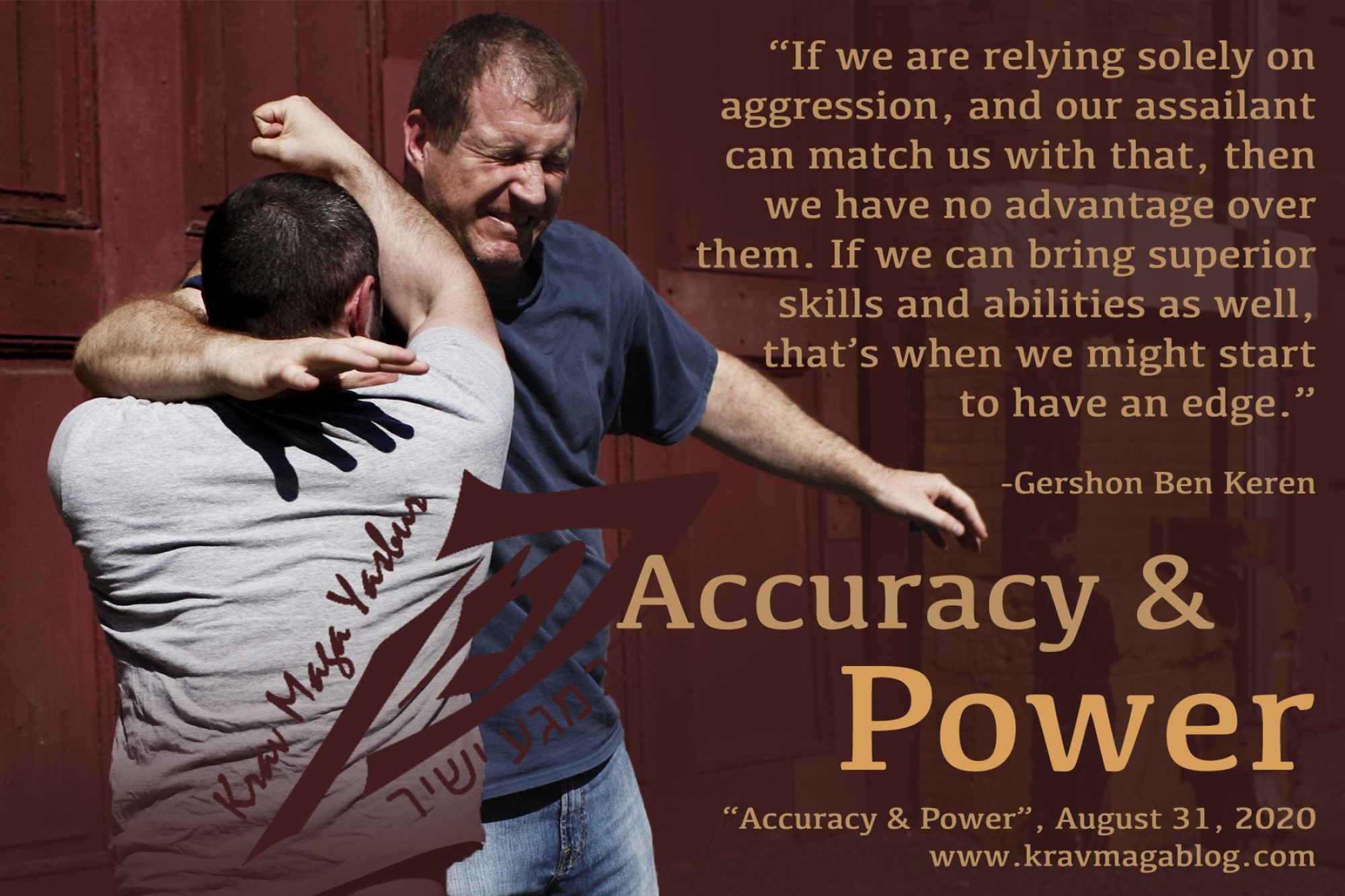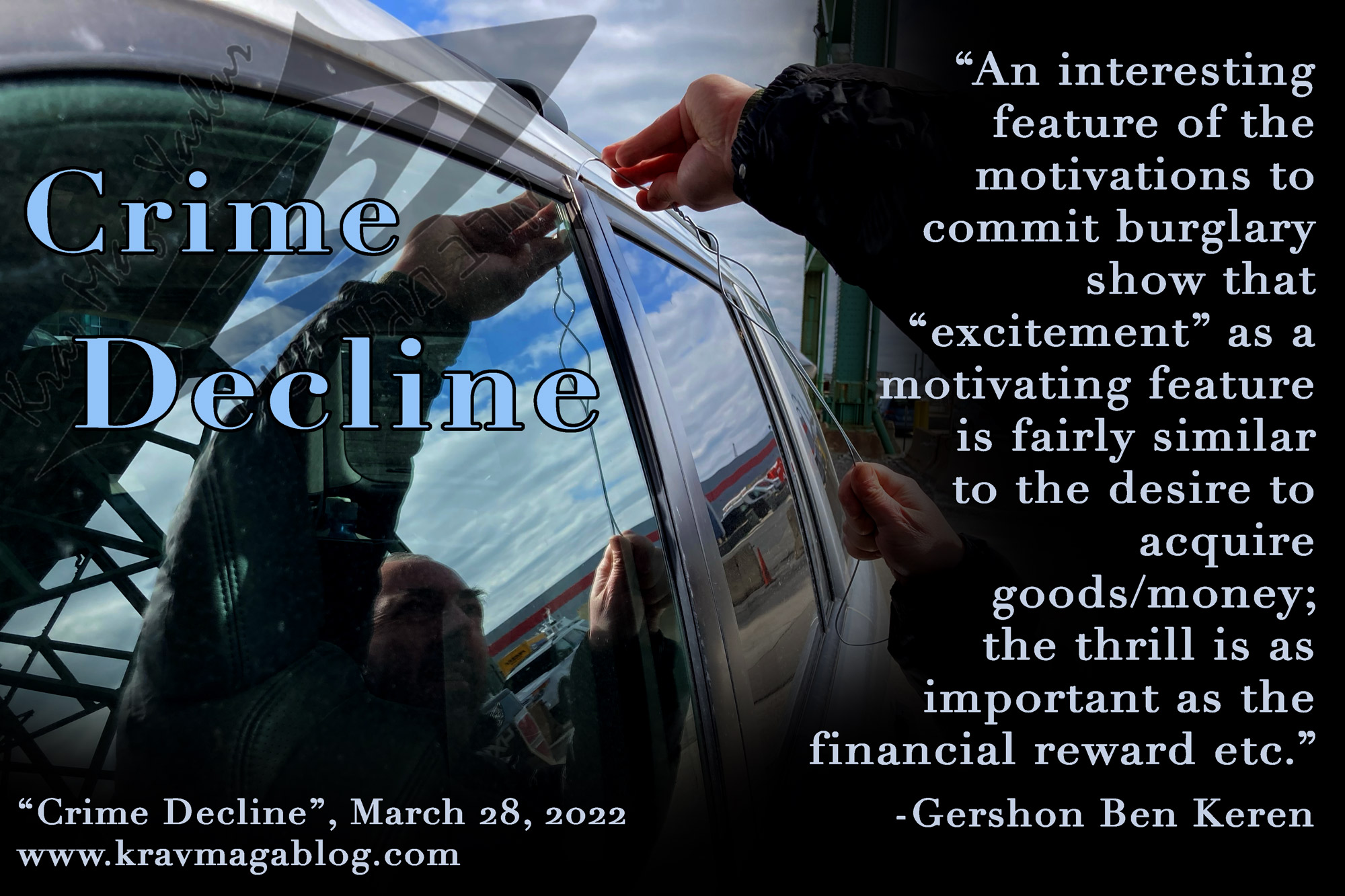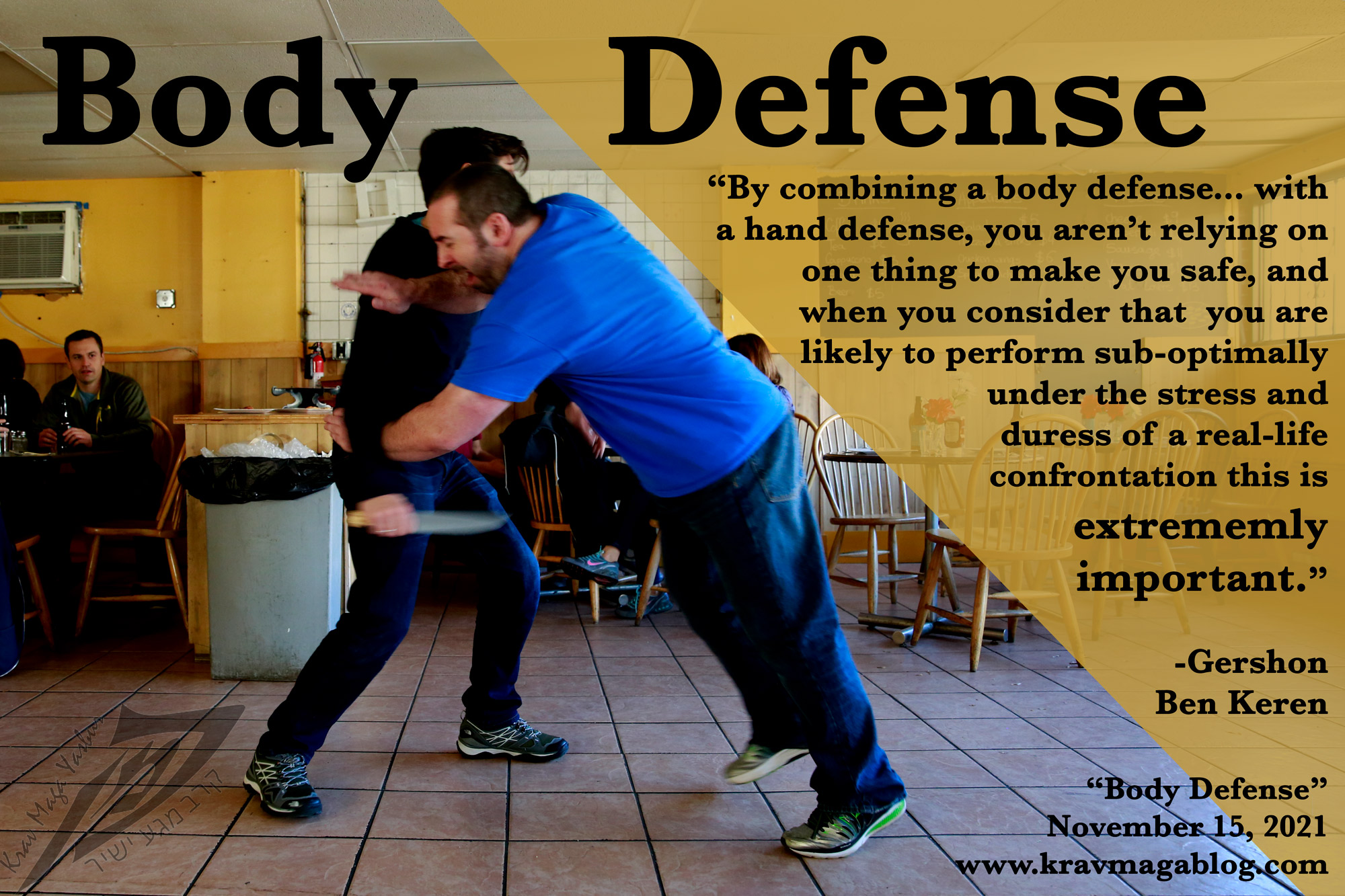Body Defense, is an article written by Gershon Ben Keren, a 5th Degree Black Belt in Krav Maga, who teaches Krav Maga in Boston, MA. He has also authored three Amazon best-Selling Books on Krav Maga.
One of the things that first attracted me to Krav Maga was its codification of fighting concepts and ideas. Where fighting is concerned there is very little “new” however Krav Maga brings these concepts to the fore and teaches by them. Krav Maga is less about techniques than it is about the application of these heuristics to fighting, in fact I would make the argument that the techniques are a way of communicating these ideas, rather than things to be blindly performed. In this article I want to talk about one of these ideas: “Hand Defense, Body Defense.” It’s not other martial arts and fighting systems don’t contain this idea, for example Retzev, the idea of putting an opponent/aggressor under continuous, unbroken pressure can be found in other systems, is not unique to Krav Maga e.g., when I was a competitive Judoka that was the way I was taught to attack: find an opening, and keep working, working, and working it, until you got the Ippon etc. Where Krav Maga does a lot better than many other systems though is in articulating these ideas. In this article I want to focus on the importance of the body defense component of this fighting idea.
Whilst there is often too much emphasis on being taken by complete surprise in Krav Maga training, which doesn’t mirror or reflect how most real-life incidents occur, the idea that you will probably respond sub-optimally is realistic; even staples of Krav Maga, such as simultaneous blocking and striking, are often a tall order to pull off successfully in an actual altercation etc., however much an armchair pundit may argue. I’m not saying it can’t be done but most people’s heads are not fully in the game at the start of a physical confrontation i.e., most of them are still dealing with the shock and awe of somebody physically assaulting them, regardless of the amount of aggression training they have done (and that isn’t to knock the importance of this type of training). When you are attacked for real, the social order/contract you have come to accept and rely on has been thrown out of the window, something that doesn’t happen during a stress test, or even sparring (another important aspect of training). However, perhaps more important – when looking at reality – than the simultaneous strike with the block, is the body defense component that accompanies the hand-defense, as it is this that breaks up your assailant’s rhythm and flow. You might block/defend the first strike, however if you are still in the same place when they throw the second it’s unlikely that you will do so again, as they’ve not had to change their response if you are still in the same position. Part of your movement, your body defense, is to force them to have to respond to you e.g., to attack again, they now have to recognize where you are and reorientate themselves to make their next assault – this creates opportunities, and possibly better ones than a badly thrown simultaneous strike that lacks power and/or effect. Again, if you are able to get the simultaneous strike/punch, along with the hand and body defense that’s ideal, but getting all three together is often a lot to ask.
The importance of the body defense can clearly be seen in stick and baseball bat attacks, where the majority of the defense comes from closing distance, so that you are inside the last third of the stick/bat, where the power is concentrated. If with an overhead strike, you can get inside this, the power the bat or stick can generate is greatly diminished. In such instances the “hand-defense” component is largely about insurance, protecting the head should the body-defense not be sufficient. The focus should not be on intercepting and deflecting the bat (your arm may not break but it will feel the impact), but on getting as close to your assailant as you can – and as far away from the end of the bat as is possible. The importance of the body defense can also be seen when dealing with a knife-shank or “Oriental” attack; without pulling the hips back, you will not be able to bring the forearm down to a position where you can stop the knife. Pulling the hips back, as well as being instinctive, also adds to the defense if it is a longer knife. This is also a good illustration of how the body defense introduces latency into the defense, as if the block isn’t sufficient on its own to make a full defense, then the body movement will assist in it e.g., if the block is performed 50% correctly, and the body-defense is performed 50% correctly, this still adds up to 100%. Performed correctly, the body defense can also add weight and power to the block, meaning that the arm isn’t doing all the work in stopping the upwards movement of the blade. This addition of force can be necessary, especially when the knife/blade has momentum.
By combining a body defense – however small, such as pulling the neck away from a strangulation as you remove the offending arm etc. – with a hand-defense, you aren’t relying on one thing to make you safe, and when you consider that you are likely to perform sub-optimally under the stress and duress of a real-life confrontation this is extremely important. In any fight we should not be thinking that it will be ended with one response or comprise of just one phase; real-life violence is never that simplistic. If our body defense breaks our assailant’s rhythm and creates an opportunity for us to move from prey to predator, then it has already accomplished a lot. Unfortunately, it is often the least practiced component of a defensive maneuver with most people getting caught up in making the hand-defense perform an undue amount and share of the work etc. It is worth taking time in your training to emphasize this component of your techniques.
0 COMMENTS















